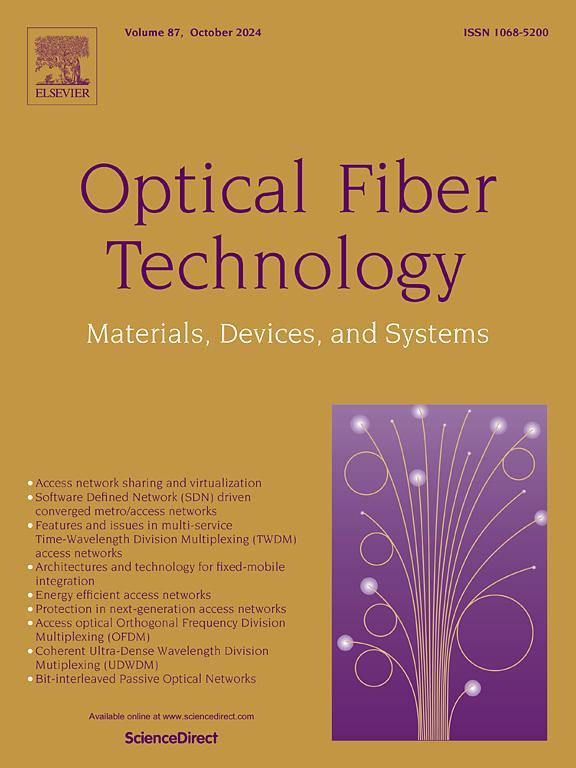基于路径衍生图的QKD光网络资源分配方案
IF 2.7
3区 计算机科学
Q2 ENGINEERING, ELECTRICAL & ELECTRONIC
引用次数: 0
摘要
在量子密钥分发(QKD)与波分复用(WDM)技术深度融合的光网络领域,一系列关键技术正在重塑信息安全传输的格局。其中,可信中继技术通过建立可信中间节点,实现量子密钥在远距离传输中的中继分发,有效突破了量子信号传输距离的限制;光旁路技术通过允许在非相邻节点之间建立量子通道来绕过光域中的任何中间节点;量子密钥池技术可以集中存储和动态调度量子密钥资源,以满足不同业务对密钥的突发需求。然而,这些技术的协调应用给资源管理带来了高度的复杂性。面对上述资源分配的复杂性挑战,本文重点对QKD光网络中新的静态路由、信道、密钥速率和时隙分配(RCKTA)问题进行了深入研究。为此,本文创新性地提出了基于图论的路径衍生图模型,将网络中的节点、链路、通道和量子资源映射到图的顶点和边,并通过定义特殊属性和约束,准确描述资源之间的依赖关系和分配逻辑。为此,本文提出了一种基于该模型的资源分配算法,对信道、时隙、QKD模块和量子密钥池资源进行合理管理,实现高效分配。本文章由计算机程序翻译,如有差异,请以英文原文为准。
A resource allocation scheme based on path-derived graph in QKD optical network
In the field of optical networks where quantum key distribution (QKD) and wavelength division multiplexing (WDM) technologies are deeply integrated, a series of key technologies are reshaping the pattern of information security transmission. Among them, trusted relay technology realizes the relay distribution of quantum keys in long-distance transmission by building trusted intermediate nodes, effectively breaking through the limitation of quantum signal transmission distance; optical bypass technology bypasses any intermediate nodes in the optical domain by allowing quantum channels to be established between non-adjacent nodes; quantum key pool technology can centrally store and dynamically schedule quantum key resources to meet the sudden demand for keys from different services. However, the coordinated application of these technologies has brought about a high degree of complexity in resource management. Faced with the complexity challenges of the above resource allocation, this paper focuses on the new static routing, channel, key rate and time slot allocation (RCKTA) problem in QKD optical networks for in-depth research. To this end, this paper innovatively proposes a path-derived graph model, which is based on graph theory and maps nodes, links, channels and quantum resources in the network to vertices and edges of the graph, and accurately describes the dependency relationship and allocation logic between resources by defining special attributes and constraints. To this end, this paper proposes a resource allocation algorithm based on this model to rationally manage channel, time slot, QKD module and quantum key pool resources to achieve efficient allocation.
求助全文
通过发布文献求助,成功后即可免费获取论文全文。
去求助
来源期刊

Optical Fiber Technology
工程技术-电信学
CiteScore
4.80
自引率
11.10%
发文量
327
审稿时长
63 days
期刊介绍:
Innovations in optical fiber technology are revolutionizing world communications. Newly developed fiber amplifiers allow for direct transmission of high-speed signals over transcontinental distances without the need for electronic regeneration. Optical fibers find new applications in data processing. The impact of fiber materials, devices, and systems on communications in the coming decades will create an abundance of primary literature and the need for up-to-date reviews.
Optical Fiber Technology: Materials, Devices, and Systems is a new cutting-edge journal designed to fill a need in this rapidly evolving field for speedy publication of regular length papers. Both theoretical and experimental papers on fiber materials, devices, and system performance evaluation and measurements are eligible, with emphasis on practical applications.
 求助内容:
求助内容: 应助结果提醒方式:
应助结果提醒方式:


